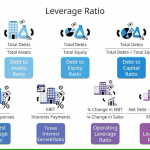In today’s fast-paced and ever-changing financial landscape, deciding whether it’s a bear or bull market can have significant implications for IPO activity. As investors eagerly anticipate the launch of new companies, economic factors play a crucial role in shaping the level of activity. In this article, we will delve into the intricacies of how economic indicators impact the IPO market.
During a bear market, characterized by falling stock prices and a pessimistic sentiment, IPO activity tends to decline. Investors become less willing to take risks, preferring to hold onto their existing investments rather than allocating funds to new ventures. Conversely, in a bull market, where stock prices are rising, optimism prevails, and investors are more willing to participate in IPOs, leading to increased activity.
However, examining only the overall market sentiment is not enough. Economic factors such as interest rates, consumer confidence, and industry performance also heavily influence IPO activity. By understanding these factors, investors and analysts can make informed decisions and gauge the potential success of upcoming IPOs.
Stay tuned as we explore the delicate balance of economic forces and their impact on the IPO market, equipping you with the knowledge to navigate this exciting yet unpredictable realm.
Understanding the difference between bear and bull markets
Bear markets and bull markets are two opposing market conditions that have a profound impact on IPO activity. Understanding the differences between these market conditions is crucial for investors and analysts seeking to navigate the IPO landscape.
In a bear market, stock prices are on the decline, and investor sentiment is pessimistic. This can be attributed to factors such as economic downturns, political instability, or other external shocks. During bear markets, IPO activity tends to decline as investors become more risk-averse. Instead of allocating funds to new ventures, investors prefer to hold onto their existing investments in an attempt to minimize losses.

Conversely, bull markets are characterized by rising stock prices and an optimistic sentiment. In a bull market, investors are more willing to participate in IPOs, leading to increased activity. The positive market sentiment and higher valuations can create an environment where companies are more likely to go public, capitalizing on favorable market conditions.
It is important to note that bear and bull markets are not binary states but rather exist on a continuum. Market conditions can fluctuate between these two extremes, with varying levels of optimism or pessimism influencing IPO activity.
The impact of economic factors on IPO activity
While market sentiment is a significant factor in determining IPO activity, economic factors play a crucial role in shaping the overall landscape. Several key economic indicators directly impact the IPO market, providing insights into the health of the economy and investor sentiment.
One such indicator is interest rates. When interest rates are low, borrowing costs decrease, making it more attractive for companies to go public. Lower interest rates also stimulate economic growth, which can lead to increased investor confidence and a higher willingness to participate in IPOs. On the other hand, high interest rates can dampen IPO activity by increasing borrowing costs and reducing the profitability of potential IPO candidates.
Consumer confidence is another important economic factor to consider. During periods of high consumer confidence, individuals are more likely to invest in the stock market, including participating in IPOs. Positive consumer sentiment reflects a strong economy, which can create a favorable environment for IPOs. Conversely, low consumer confidence can lead to decreased IPO activity as investors may be more cautious with their investments.
Industry performance also has a direct impact on IPO activity. Industries experiencing robust growth and high demand are more likely to attract IPO candidates. Investors are attracted to sectors with promising growth prospects, as they offer the potential for significant returns. Conversely, industries facing challenges or declining demand may experience reduced IPO activity.
Key economic indicators that affect IPOs
Several economic indicators provide valuable insights into the IPO market and can help investors and analysts gauge the potential success of upcoming IPOs.
- Gross Domestic Product (GDP): GDP is a measure of a country’s economic performance. A strong GDP growth rate often indicates a healthy economy, which can create a favorable environment for IPOs.
- Unemployment Rate: A low unemployment rate suggests a strong labor market, indicating consumer spending power and overall economic stability. This can contribute to higher IPO activity.
- Inflation Rate: Stable or low inflation rates are generally favorable for IPOs. High inflation can erode purchasing power and negatively impact investor sentiment.
- Interest Rates: As mentioned earlier, interest rates directly affect borrowing costs and can influence the decision to go public. Low interest rates are generally more favorable for IPO activity.
- Consumer Confidence Index: This index reflects the overall sentiment and optimism of consumers. Higher consumer confidence can lead to increased IPO activity.
- Industry-specific Indicators: Industry-specific indicators, such as sales growth rates, market demand, and industry performance, provide insights into the potential success of IPOs within specific sectors.
Understanding and monitoring these economic indicators can provide valuable insights into the IPO market, enabling investors and analysts to make informed decisions.
How market sentiment influences IPO activity
Market sentiment, driven by investor perceptions and emotions, plays a significant role in shaping IPO activity. Investor sentiment can be influenced by a variety of factors, including economic conditions, political stability, and global events.
In a bear market, characterized by negative sentiment and falling stock prices, investors become more risk-averse. This risk aversion can lead to decreased IPO activity, as investors prefer to hold onto their existing investments rather than allocate funds to new ventures. The fear of potential losses during bear markets often outweighs the potential gains associated with IPO investments.
Conversely, in a bull market, where stock prices are rising and optimism prevails, investors are more willing to participate in IPOs. Positive market sentiment creates an environment where companies can attract higher valuations and capitalize on favorable market conditions. The belief in potential gains outweighs the fear of potential losses, driving increased IPO activity.
It is important to note that market sentiment can be influenced by both rational and irrational factors. While rational factors, such as economic indicators, can provide a logical basis for investor sentiment, irrational factors, such as herd mentality or investor overconfidence, can also significantly impact IPO activity.
Case studies of IPOs during bear and bull markets
Examining case studies of IPOs during bear and bull markets can provide valuable insights into the impact of economic factors and market sentiment on IPO activity.
During the global financial crisis of 2008, the IPO market experienced a significant decline due to the bearish market sentiment and economic uncertainty. Companies were reluctant to go public, fearing that investor appetite for new offerings would be low. IPO activity remained subdued until market conditions improved and investor confidence was restored.
In contrast, during the dot-com bubble of the late 1990s, the IPO market experienced a frenzy of activity as investor optimism soared. Companies with minimal revenue or even losses were able to go public and attract significant investor interest. The bullish market sentiment and the belief in the potential of internet-related businesses created a speculative environment that fueled the IPO boom.
These case studies highlight the importance of market sentiment and economic factors in shaping IPO activity. Understanding the dynamics of different market conditions can help investors and analysts navigate the IPO landscape more effectively.
Strategies for investing in IPOs during different market conditions
Investing in IPOs can be both exciting and challenging, especially in different market conditions. Here are some strategies to consider when investing in IPOs during bear and bull markets:
Bear Market Strategies:
- Conduct thorough due diligence: In a bear market, it becomes even more critical to evaluate the fundamentals of potential IPO candidates. Carefully analyze financials, market conditions, and competitive landscape to assess the long-term viability of the company.
- Focus on defensive sectors: Defensive sectors, such as healthcare or consumer staples, tend to be less affected by economic downturns. Look for IPO opportunities within these sectors that have strong growth potential.
- Diversify your portfolio: In uncertain market conditions, diversification is key. Invest in a range of IPOs across different sectors to spread the risk.
Bull Market Strategies:
- Capitalize on market momentum: In a bull market, investor sentiment is positive, and IPO valuations can be high. Consider participating in IPOs with strong growth prospects and innovative business models.
- Evaluate the long-term potential: While the market sentiment may be favorable, it is important to evaluate the long-term potential of IPO candidates. Look for companies with sustainable competitive advantages and strong growth drivers.
- Set realistic expectations: In a bull market, it is easy to get caught up in the hype surrounding IPOs. Set realistic expectations and avoid making impulsive investment decisions based solely on market sentiment.
Tips for evaluating IPO opportunities in bear and bull markets
When evaluating IPO opportunities, regardless of market conditions, it is essential to conduct thorough research and analysis. Here are some tips to consider:
- Assess the company’s business model: Understand the company’s products or services, its competitive advantage, and its growth potential. Evaluate whether the business model is sustainable and has a clear path to profitability.
- Analyze financials: Review the company’s financial statements, including revenue growth, profitability, and cash flow. Look for consistent revenue growth and positive earnings trends.
- Evaluate the management team: Assess the experience and track record of the management team. Look for a strong leadership team that has a clear vision and the ability to execute on the company’s strategy.
- Consider market trends: Evaluate the industry trends and market conditions. Look for IPO candidates that are well-positioned to capitalize on market opportunities and address potential challenges.
- Seek expert opinions: Consult with financial advisors or industry experts who have experience in evaluating IPOs. Their insights and expertise can provide valuable guidance in assessing potential opportunities.
Structuring Your Investment Portfolio: Strategies for Bull and Bear Markets
Investing in the stock market requires careful consideration of market conditions and a well-thought-out investment strategy. Whether the market is experiencing a bull run characterized by rising prices and optimism or a bear market marked by declining prices and pessimism, the way you structure your investment portfolio can significantly impact your returns and overall financial well-being.

In this section, we’ll delve into the strategies you should consider for each market scenario.
Bull Market Strategies:
During a bull market, investor sentiment is typically positive, and stock prices tend to trend upwards. While it may be tempting to chase high-flying stocks and ride the momentum, it’s essential to maintain a disciplined approach to portfolio management. Here are some strategies to consider in a bull market:
- Focus on Growth Stocks: Growth stocks are companies expected to grow at an above-average rate compared to other companies. These stocks often outperform during bull markets as investors seek opportunities for capital appreciation. Look for companies with strong fundamentals, innovative products or services, and a track record of consistent growth.
- Allocate to Equities: In a bull market, the risk appetite of investors is typically higher, making equities an attractive investment option. Consider allocating a significant portion of your portfolio to stocks across various sectors and industries to capitalize on market upswings. Diversification can help spread risk and enhance returns.
- Stay Invested: Timing the market perfectly is nearly impossible, even during bull markets. Instead of trying to predict market peaks and valleys, focus on staying invested for the long term. Historically, bull markets have lasted longer than bear markets, and staying the course can lead to substantial wealth accumulation over time.
- Rebalance Regularly: Bull markets can lead to asset price appreciation, causing your portfolio’s asset allocation to deviate from your target allocation. Regularly rebalancing your portfolio by selling assets that have appreciated and buying underperforming assets can help maintain your desired risk-return profile.
- Consider Defensive Sectors: While growth stocks may outperform during bull markets, it’s essential to maintain a balanced portfolio by including defensive sectors such as consumer staples, healthcare, and utilities. These sectors tend to be less cyclical and can provide stability during market downturns.
Bear Market Strategies:
In a bear market, investor sentiment turns sour, and stock prices decline across the board. Navigating a bear market requires patience, discipline, and a focus on capital preservation. Here are some strategies to consider during a bear market:
- Shift to Defensive Assets: As stock prices decline, investors often seek refuge in defensive assets such as bonds, cash, and gold. These assets tend to be less volatile and can provide a cushion against further market declines. Consider reallocating a portion of your portfolio to defensive assets to mitigate downside risk.
- Diversify Across Asset Classes: Diversification is crucial, especially during bear markets when volatility is heightened. Allocate your portfolio across various asset classes, including equities, fixed income, real estate, and alternative investments. A diversified portfolio can help reduce correlation risk and minimize losses during market downturns.
- Focus on Dividend-Paying Stocks: Dividend-paying stocks can provide a source of income during bear markets when capital appreciation may be limited. Look for companies with a history of stable dividend payments, strong cash flows, and sustainable payout ratios. Reinvesting dividends can compound returns over time and enhance long-term wealth accumulation.
- Employ Hedging Strategies: Hedging strategies such as put options, inverse ETFs, and tactical asset allocation can help protect your portfolio against downside risk during bear markets. While hedging can incur additional costs, it can provide peace of mind and mitigate losses during prolonged market downturns.
- Stay Disciplined: Emotions often run high during bear markets, leading investors to make irrational decisions driven by fear and panic. Stay disciplined and stick to your investment plan, focusing on your long-term financial goals rather than short-term market fluctuations. Remember that bear markets are temporary, and markets tend to recover over time.
Structuring your investment portfolio requires careful consideration of market conditions, your risk tolerance, and investment objectives.
Whether you’re navigating a bull market or a bear market, maintaining a diversified portfolio, staying disciplined, and focusing on long-term wealth accumulation are key principles to follow. By adopting a strategic approach to portfolio management, you can navigate market cycles and achieve financial success over the long term.
The role of government policies in shaping IPO activity
Government policies and regulations also play a significant role in shaping IPO activity. Regulatory frameworks can impact the ease of going public, the level of disclosure required, and the overall investor protection.
Stringent regulations can act as a barrier to entry for companies considering an IPO, especially for smaller companies. Complex and costly compliance requirements can deter potential IPO candidates, particularly in bearish market conditions.
Conversely, favorable government policies can encourage IPO activity. Initiatives that promote entrepreneurship, ease regulatory burdens, or provide incentives for companies to go public can stimulate IPO activity.
Government policies also influence investor confidence. Clear and transparent regulations can enhance investor protection and foster trust in the IPO market. This, in turn, can attract more investors and potentially increase IPO activity.
Conclusion: Navigating IPOs in a dynamic economic landscape
In conclusion, economic factors and market sentiment have a profound impact on IPO activity. Understanding the difference between bear and bull markets, as well as key economic indicators, is crucial for investors and analysts seeking to navigate the IPO landscape.
By considering economic factors such as interest rates, consumer confidence, and industry performance, investors can make informed decisions and assess the potential success of upcoming IPOs.
Strategies for investing in IPOs during different market conditions, along with tips for evaluating IPO opportunities, provide a framework for making sound investment decisions.
Furthermore, government policies and regulations shape the IPO market, influencing the ease of going public and investor confidence.
In a dynamic economic landscape, staying informed and adaptable is essential. By leveraging economic insights and market knowledge, investors and analysts can navigate the complexities of IPOs and potentially capitalize on the opportunities they present.






